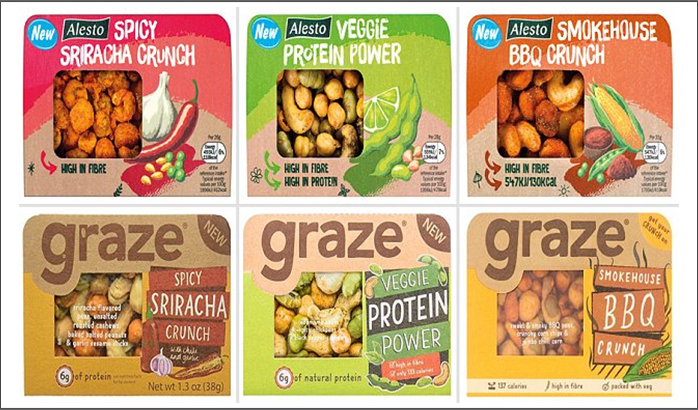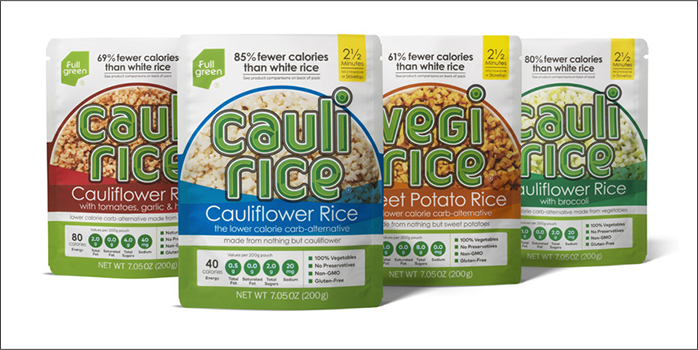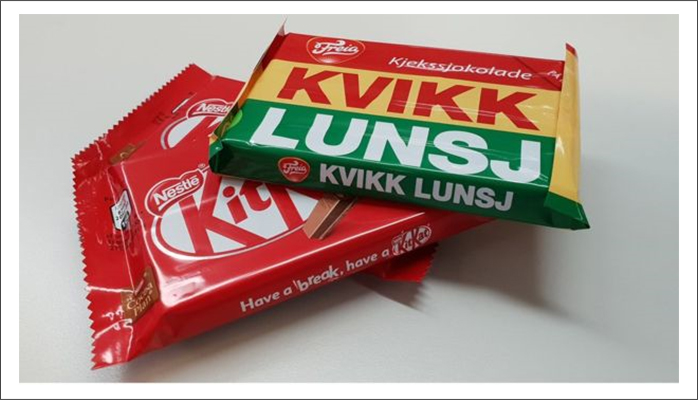October 30, 2018 Industry news
If you are creating your food brand or you're already selling in grocery stores, read this guest blog on protecting brand integrity.
Karen Green - business mentor and member of Enterprise Nation talks through a 5 point checklist to ensure you are protecting all elements of the brand when you can and to understand when you can't.
1. Your brand name
Coke – it’s the real thing – well it certainly is a brand name that is recognised and the trade mark is globally registered. Is yours? I meet new clients all the time who just haven’t got round to it because they don’t think they need to or it is too expensive – it costs £175 to register a mark in one UK category – the best money you will ever spend!!
I am not a lawyer so please take legal advice before you register your trademark but do not waste £’000s on people who say they will do the whole process for you unless you are going overseas which is complicated and worth taking additional advice.
First thing to do is make sure someone hasn’t got there first!! For the UK, all you need to know is on the government trade marks website. Trade marks are registered by product category so if you want to register for food and drink – then pick the right category – each one costs an extra £50 so if you think you might want to extend your range to gifts or clothing one day make sure you add the correct category
If there is a mark registered, you can still register especially if it has not been used for a while and fallen in to disuse and the IPO will approach the owner on your behalf. You might want to take some advice on this first as they don’t refund your money!!
But even if you get a trade mark, you might find a supermarket making something very similar – this is an old example but still my favourite!

2. Your recipes
You cannot trade mark, patent or in any way protect a recipe. No contrary to popular belief…… the Coca Cola or KFC recipes are not patented – and to be honest if they were it would make it so much easier to copy. But they are a secret and that is the solution if possible!
It IS a challenge to keep recipe a secret as the ingredients are all declared on the label but you can have a secret blend of herbs and spices. Or the actual proportions could to some extent be under wraps.
But if you take this example of how the discounters have openly flaunted the recipe, pack design and even product titles – you know you have your work cut out!

3. Your manufacturing process
If you have your product made by someone else and it is a standard method then it is not really possible to protect that process if they decide to sell it to someone else. However if you discover a new way of making something or have a unique manufacturing process then you might be onto something – even if it is made by a third party – if you can prove it was your idea then you might be able to register it as intellectual property. My favourite example of this is cauli rice from the Full green who worked out how to make ambient rice from cauliflower without any additives – and they patented the process!!

4. Your packaging design
As we saw in the example of Graze, it is possible to get very close to a pack design without being accused of “passing off”. I always advise start ups to pick the most standard, off the shelf packaging and add the design value from the labels or the sleeves as this will keep the cost down. But if you have a unique piece of packaging then see if you can patent it. I have a client who has created an amazing piece of packaging which is a game changer – she has patented it but the investment has probably been in excess of £15k but could be worth millions in brand identity and licencing opportunities.
5. Your product format
Sometimes we believe we have a unique way of presenting a product – Nestle certainly thought so with Kitkat and they tried to register it as their own. There was already a precedent in existence and the courts decided that it was not unique. So if you create something unique get it registered immediately – an investment well made.

So, in summary, I don’t have any magic solutions for protecting your brand integrity, product format or design but hopefully have given you some ideas about some approaches you can take.
About the author
Karen Green is member of our partner Enterprise Nation. She is a business mentor, speaker and author of the best selling book “Recipe for success – the ingredients of a profitable food business". She has a wealth of commercial experience, having worked both as a buyer for UK retailers, Tesco and Boots, and commercial director for various food manufacturing businesses supplying UK retail and overseas.
She now works with food SME owners and entrepreneurs from start-ups to second stage businesses enabling them to grow their businesses doing what they love (and she loves!) - working with food.
GS1 UK members can find out more and join Enterprise Nation community below.
Visit our new Community partners zone, to connect with our SME community partners.
Related
How to Sell Online: A Guide to Turning your High Street Store into a Multi-Channel Business